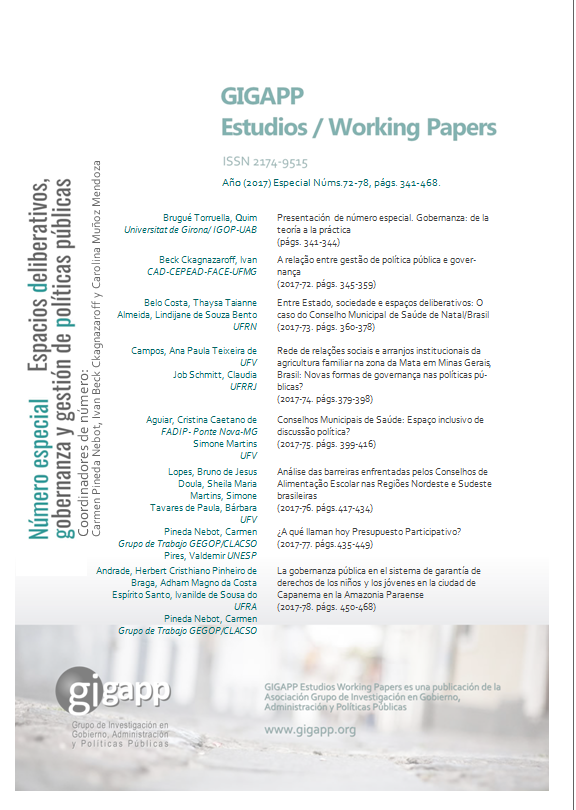Rede de relações sociais e arranjos institucionais da agricultura familiar na zona da Mata em Minas Gerais, Brasil: Novas formas de governança nas políticas públicas?
Resumen
Este artigo busca apreender as interfaces estabelecidas entre organizações sociais e políticas públicas na implementação de programas e ações de desenvolvimento rural no Brasil. Dedica especial atenção aos arranjos institucionais e redes de relações construídas ao longo do tempo em um contexto municipal, avaliando seus efeitos no que diz respeito à participação e à estruturação de novas formas de governança. O estudo foi realizado no município de Araponga, no estado de Minas Gerais, através de uma pesquisa ancorada em métodos qualitativos e análise de redes sociais. Os resultados reforçam a importância das redes de relações e organizações locais no acesso às políticas públicas, apontando também para dificuldades enfrentadas pelas organizações de agricultores na articulação entre diferentes programas.
Descargas
Derechos de autor 2017 Ana Paula Teixeira de Campos, Claudia Job Schmitt

Esta obra está bajo licencia internacional Creative Commons Reconocimiento-NoComercial-CompartirIgual 4.0.
Aquellos autores/as que tengan publicaciones con esta revista, aceptan los términos siguientes:
a. Los autores/as conservarán sus derechos de autor y garantizarán a la revista el derecho de primera publicación de su obra, el cuál estará simultáneamente sujeto a la Licencia de reconocimiento de Creative Commons Attribution-NonCommercial-ShareAlike 4.0 International (CC BY-NC-SA 4.0) que permite a terceros compartir la obra siempre que se indique su autor y su primera publicación esta revista.
Con esta licencia de acceso abierto, los lectores (usuarios) pueden:
- Compartir — copiar y redistribuir el material en cualquier medio o formato
- Adaptar — remezclar, transformar y construir a partir del material
Bajo los siguientes términos:
-
Atribución — usarios deberán dar crédito de manera adecuada, brindar un enlace a la licencia, e indicar si se han realizado cambios. Puede hacerlo en cualquier forma razonable, pero no de forma tal que sugiera que usted o su uso tienen el apoyo de la licenciante.
-
NoComercial — usuarios no puede hacer uso del material con propósitos comerciales.
-
CompartirIgual — Si remezcla, transforma o crea a partir del material, usuarios deben distribuir su contribución bajo la misma licencia del original.
-
Sin restricciones adicionales: los usuarios no pueden aplicar términos legales o medidas tecnológicas que restrinjan legalmente a otros de hacer cualquier cosa que permita la licencia.
b. Los autores/as podrán adoptar otros acuerdos de licencia no exclusiva de distribución de la versión de la obra publicada (p. ej.: depositarla en un archivo telemático institucional o publicarla en un volumen monográfico) siempre que se indique la publicación inicial en esta revista
c. Se permite y recomienda a los autores/as difundir su obra a través de Internet (p. ej.: en archivos telemáticos institucionales o en su página web) antes y durante el proceso de envío, lo cual puede producir intercambios interesantes y aumentar las citas de la obra publicada. (Véase El efecto del acceso abierto).



